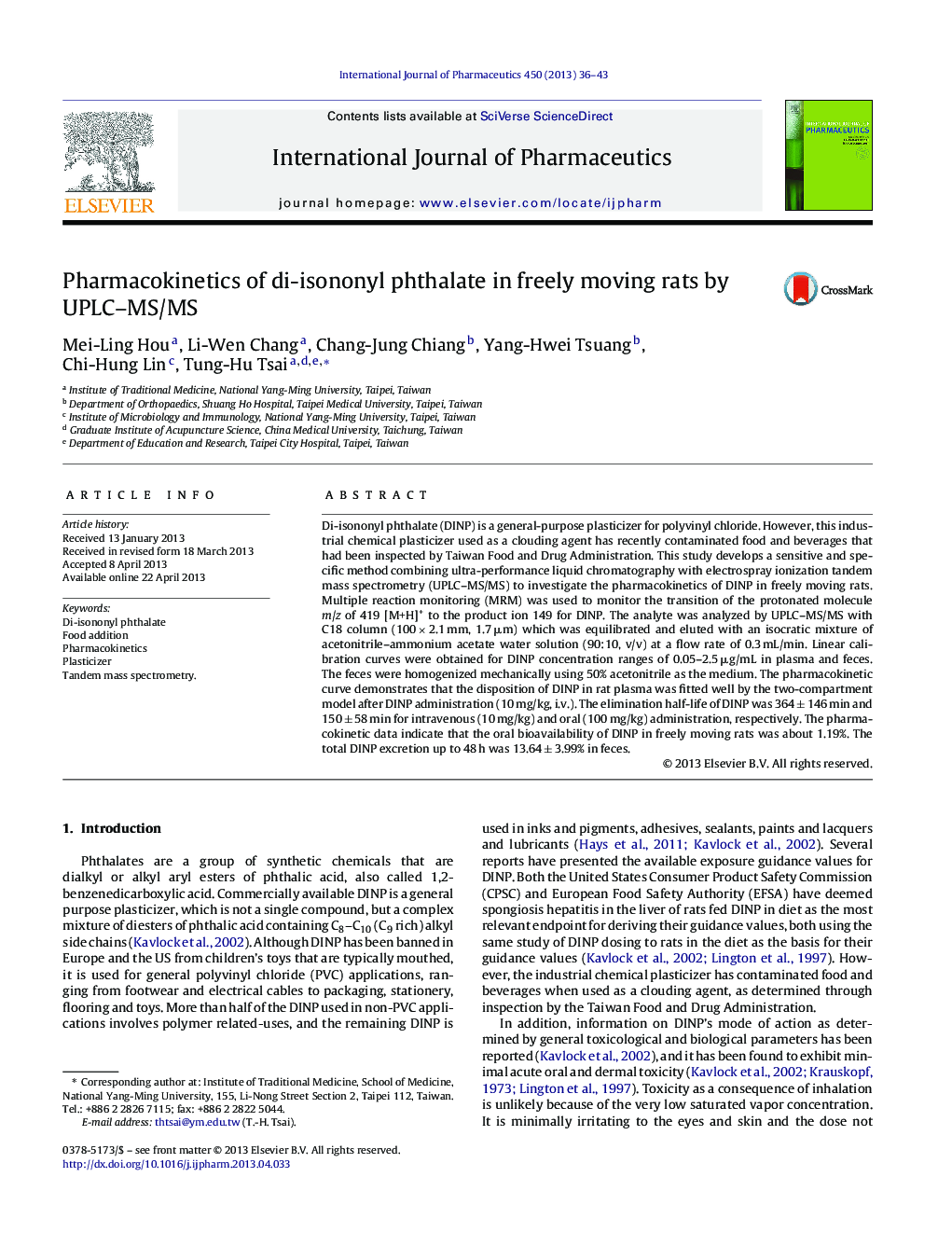| Article ID | Journal | Published Year | Pages | File Type |
|---|---|---|---|---|
| 2502425 | International Journal of Pharmaceutics | 2013 | 8 Pages |
Di-isononyl phthalate (DINP) is a general-purpose plasticizer for polyvinyl chloride. However, this industrial chemical plasticizer used as a clouding agent has recently contaminated food and beverages that had been inspected by Taiwan Food and Drug Administration. This study develops a sensitive and specific method combining ultra-performance liquid chromatography with electrospray ionization tandem mass spectrometry (UPLC–MS/MS) to investigate the pharmacokinetics of DINP in freely moving rats. Multiple reaction monitoring (MRM) was used to monitor the transition of the protonated molecule m/z of 419 [M+H]+ to the product ion 149 for DINP. The analyte was analyzed by UPLC–MS/MS with C18 column (100 × 2.1 mm, 1.7 μm) which was equilibrated and eluted with an isocratic mixture of acetonitrile–ammonium acetate water solution (90:10, v/v) at a flow rate of 0.3 mL/min. Linear calibration curves were obtained for DINP concentration ranges of 0.05–2.5 μg/mL in plasma and feces. The feces were homogenized mechanically using 50% acetonitrile as the medium. The pharmacokinetic curve demonstrates that the disposition of DINP in rat plasma was fitted well by the two-compartment model after DINP administration (10 mg/kg, i.v.). The elimination half-life of DINP was 364 ± 146 min and 150 ± 58 min for intravenous (10 mg/kg) and oral (100 mg/kg) administration, respectively. The pharmacokinetic data indicate that the oral bioavailability of DINP in freely moving rats was about 1.19%. The total DINP excretion up to 48 h was 13.64 ± 3.99% in feces.
Graphical abstractFigure optionsDownload full-size imageDownload high-quality image (110 K)Download as PowerPoint slide
